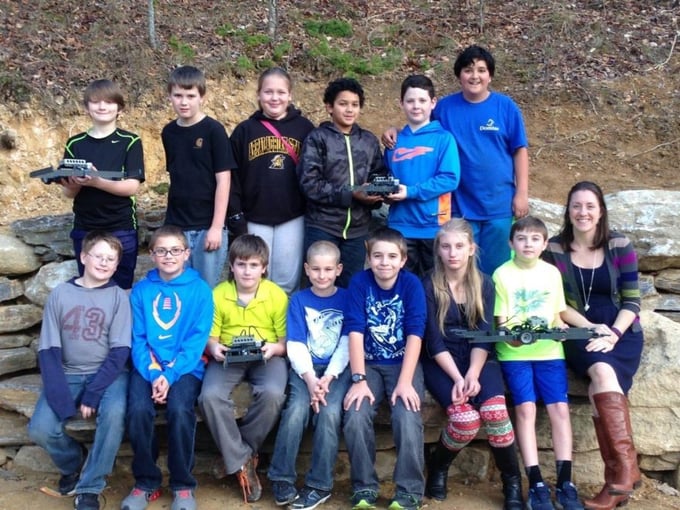Jade Evaul is a PLTW teacher at Freedom Trail Elementary School in Elk Park, North Carolina. Co-author Nancy Carver is the district’s technology facilitator.
Students at Freedom Trail Elementary School ventured into the world of robotics by participating in intense after-school learning and exploration over the course of three weeks. Through the PLTW curriculum, they experienced robotics education, but more importantly, they learned how to achieve solutions to real-world problems using the engineering design process.
As student Elijah Holtsclaw shared, this experience “was very challenging, inspiring, and motivating.”
Below, we outline each activity, project, and problem students experienced through the Robotics and Automation module:
Introduction to Robots
This activity was an eye-opener for many of our students, with their visions of human-like robots following commands or destroying worlds! They came to find out that robots are all around us and provide many beneficial services, from everyday activities to supporting safe environments for us. Students researched the different categories of robots and shared that information through presentations using Popplet on their iPads.
Inputs and Outputs
This activity allowed students to explore inputs and outputs as they observed how the robot brain responded to commands from the controller. They gained knowledge of these concepts of input and output (cause and effect), as well as how they can use the sensors to better control the robot to reach their expected goals.
Create a Toy
This activity allowed students to utilize their new knowledge as they designed a toy with one moving part. Students collaborated to come up with a final toy design and then worked together as they implemented the toy design for another team. This learning experience provided an opportunity for students to see the value in creating a detailed sketch, or as student Malachi Hughes put it, “a detailed sketch leads to a successful build.”
Build a Robot
Hands down, this was the favorite part of the program for most students. For this project, students had to build the robot chassis and begin implementing their plans to modify the basic design. Students used their robots to navigate a defined area with the goal of successfully moving three blocks to a collection zone.
Environmental Design Problem
The final task for the Robotics and Automation module utilized all of the skills students had acquired throughout the program. Students had to design a five-foot by five-foot disaster site that included hazardous materials (represented by blocks) and water (represented by red paper). Approximately one-third of this design had to be covered by water, making it inaccessible. Students had two minutes to remove five hazardous waste blocks using the robot that their group designed, modeled, and tested.
PLTW’s blog is intended to serve as a forum for ideas and perspectives from across our network. The opinions expressed are those of each guest author.

